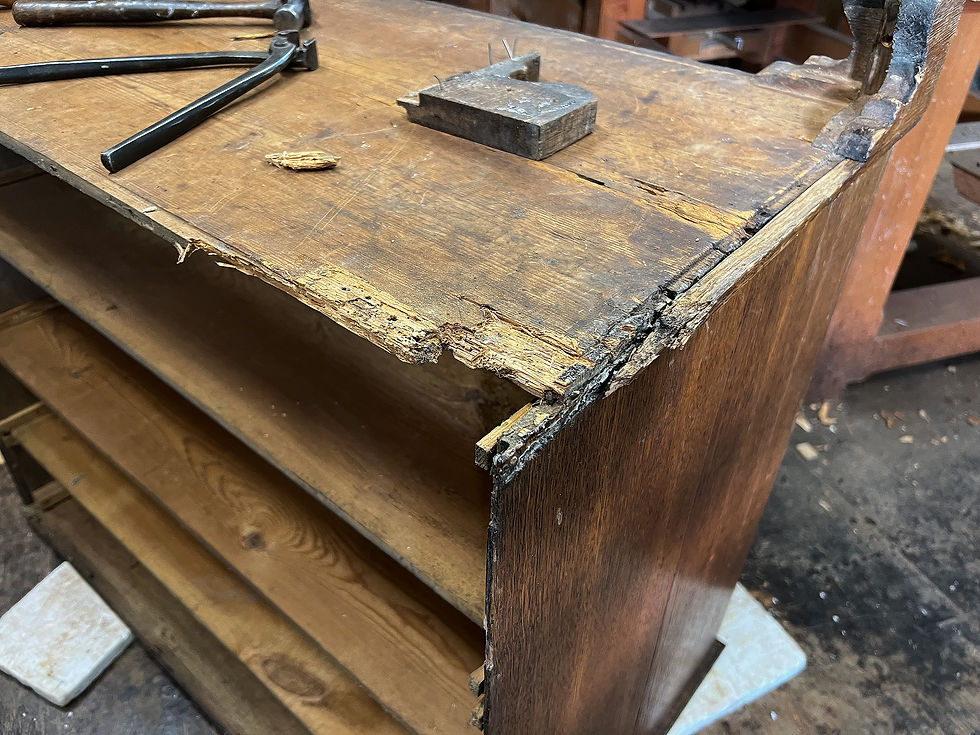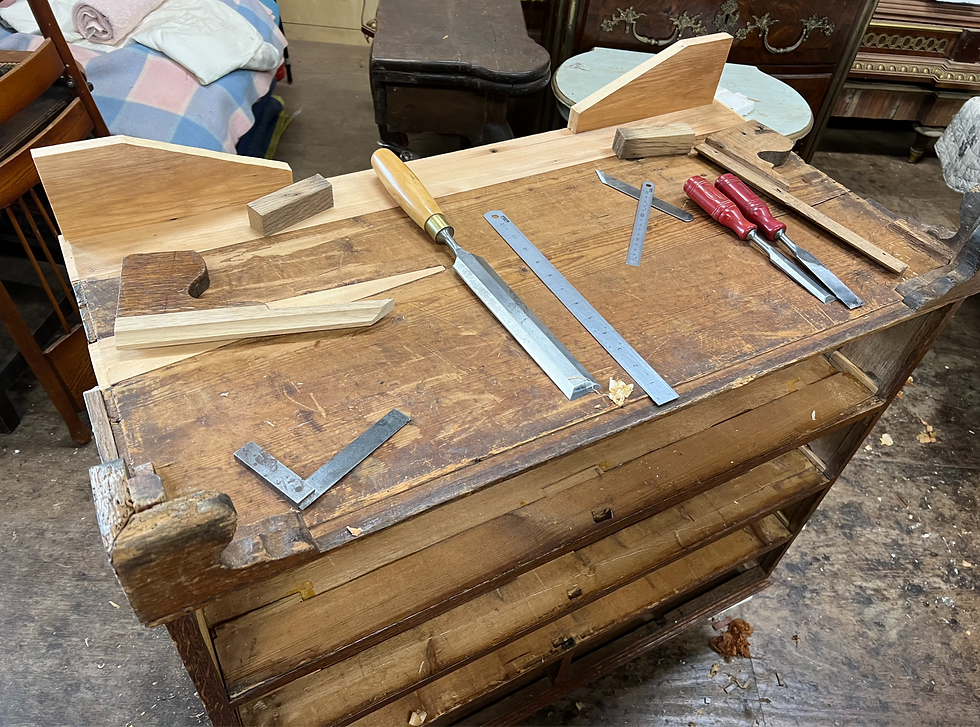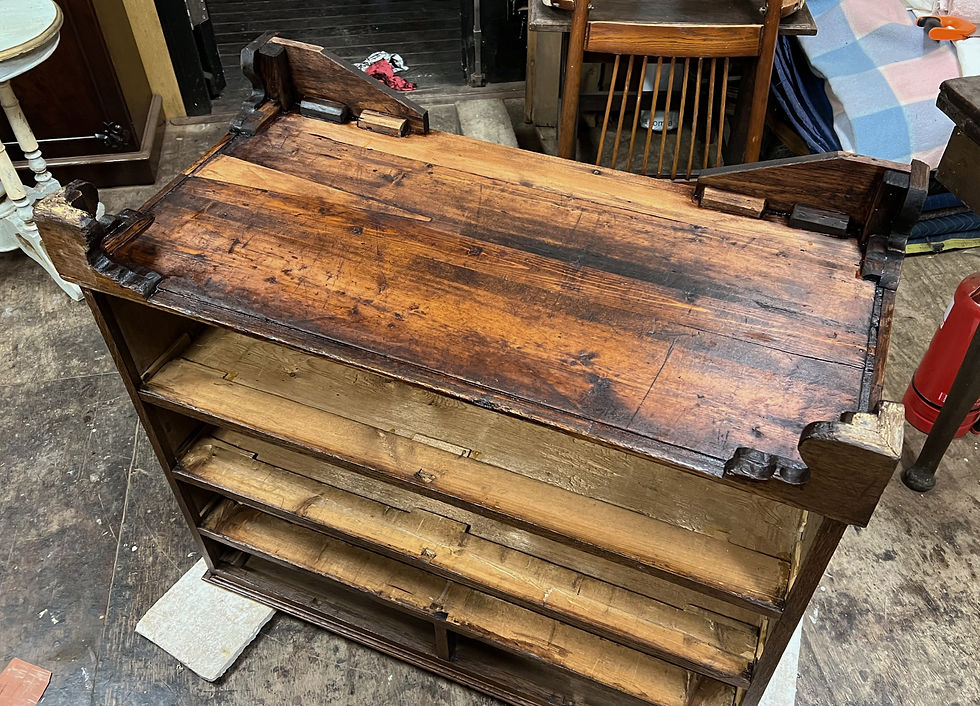Structure
- Frank van Brunschot
- Aug 21
- 2 min read
Updated: Aug 22
The basic foundation and or structure of a piece of furniture is often take for granted and somewhat overlook. I often find the bases and backs of cabinets badly damaged, neglected and poorly repaired. I wanted to focus this article on repairing the base, back and underside of a small chest of drawers. This is a fairly typical repair process which I have done countless times. Although this work is never seen it is fundamental to good quality restoration and requires good knowledge of traditional cabinetmaking.

The base of this chest of drawers is baltic pine and European Oak. The Baltic pine base board is badly damaged and missing a large area. The Oak Bracket feet at the back of the cabinet and the molding have been poorly repaired many time over the decades. As this chest is a functional piece of furniture and intended to be regularly used it was decide to properly rebuild the base.
The above photos show the existing damage and how a replacement piece of old Oak was use to repair and rebuild the damage section. A residue of modern epoxy glue and small nails shot in with a with a pneumatic nail gun can be seen in the first two photos. This is a good example of a very amateur repair, quick and easy, sight unseen, but structurally completely useless.

The base in the process of being rebuilt. The badly damaged corner and the back edge of the baseboard was remover and replaced. Old baltic pine was joined on to the existing base fixing the damaged corner and also providing a straight and secure surface for the backing boards. The brackets that support the back legs were long gone and a short piece of pine wall stud was keeping it from falling backwards. Replacement brackets were fitted.
In addition to the strip along the back of the base board a wedge piece of timber was inset removing a large area of damage. Corner block were neatly fitted and glued in with hide glue. A replacement piece of old Oak was scarfed into the existing molding, then shaped with a molding plane to match the existing profile.

A Van dyke brown stain was applied to take away some of the starkness of the freshly cut timber. This is quite an extensive rebuild and would not always be appropriate. However as this is a fairly utilitarian piece of furniture with little financial or historic value a restoration rather than a conservation approach was needed. The base finished, ready for the piece to be turned upright and the underside never seen again.












